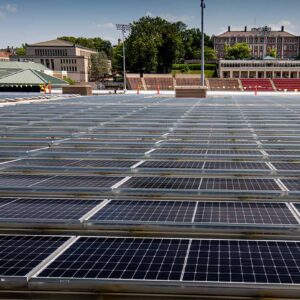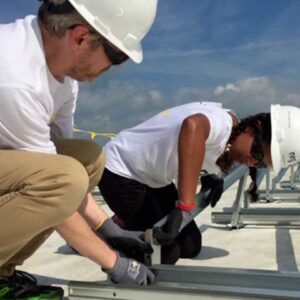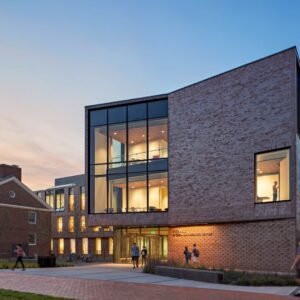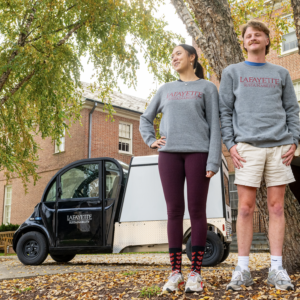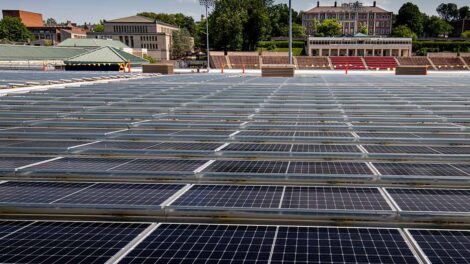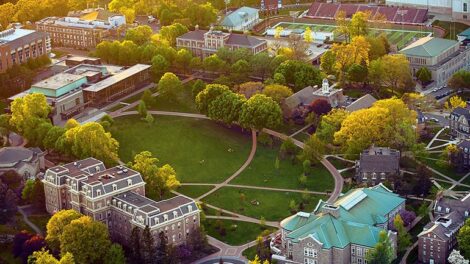Carbon Neutrality
Lafayette was the first college in the Lehigh Valley to set a climate commitment, setting a goal of carbon neutrality by 2035.
With support from passionate students, faculty and staff, Lafayette has been advancing sustainability initiatives for decades. Since signing the American College and University Presidents Climate Commitment in 2008, the College has calculated its annual emissions of greenhouse gasses, completed a campus-wide energy audit, established an Office of Sustainability in 2016, and in 2019, developed the Climate Action Plan 2.0 for reaching carbon neutrality by 2035. Lafayette releases a Campus Sustainability Report yearly, which tracks progress towards our climate, waste, academic and programmatic goals detailed in the Climate Action Plan.
Energy
Renewable Energy
Solar on Kirby Sports Center
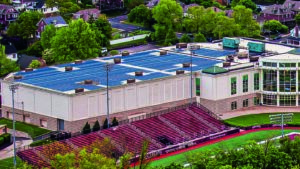 The roof of Kirby features a 470-kilowatt solar array that powers part of the building’s operations. The solar installation generates about 540 megawatt-hours of clean, renewable energy annually. Over its lifetime, it will offset 9,625 metric tons of carbon dioxide. Increasing renewable energy will help Lafayette reach the goal of carbon neutrality by 2035 and provide experiential learning opportunities for students. You can get a great view of the array from the top of the Markle Parking Deck. Learn more about the project.
The roof of Kirby features a 470-kilowatt solar array that powers part of the building’s operations. The solar installation generates about 540 megawatt-hours of clean, renewable energy annually. Over its lifetime, it will offset 9,625 metric tons of carbon dioxide. Increasing renewable energy will help Lafayette reach the goal of carbon neutrality by 2035 and provide experiential learning opportunities for students. You can get a great view of the array from the top of the Markle Parking Deck. Learn more about the project.
wind turbine and solar panels at Metzgar Fields
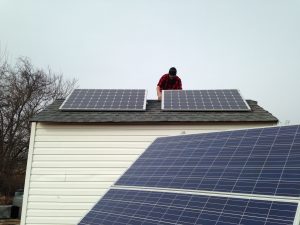 The College installed a wind turbine and two solar photovoltaic panels at Metzgar Fields, adjacent to LaFarm in Forks Township, for demonstration and research purposes, providing students an opportunity to get hands-on experience with renewable energy projects. To the right, a Lafayette student constructs solar panels on top of the storage shed.
The College installed a wind turbine and two solar photovoltaic panels at Metzgar Fields, adjacent to LaFarm in Forks Township, for demonstration and research purposes, providing students an opportunity to get hands-on experience with renewable energy projects. To the right, a Lafayette student constructs solar panels on top of the storage shed.
Energy Efficiency
In addition to renewables, Lafayette is improving existing and new infrastructure with energy efficiency practices. Over the past several years, Facilities has been replacing old, inefficient lights with more efficient models. In 2017, Facilities Operations removed 1,960 54-watt fluorescent lights in Skillman Library and replaced them with new 24-watt light-emitting diode (LED) bulbs. In early 2022, the college installed LED lights throughout 12 campus buildings and smart meters at 14 buildings, financed through the Green Revolving Fund. The estimated greenhouse savings from this project is over 500 metric tons of carbon dioxide equivalent annually.
Green Revolving Fund
Lafayette has made an investment in tools and resources with quick payback periods to enable the College to reduce energy use on campus. That energy savings—and its resulting cost savings—created a green revolving fund to provide capital for projects that reduce the College’s environmental impact and operational costs. This initiative helps fund energy efficiency projects and improvements each year.
Student Projects
With regards to academic pursuits, students regularly undertake projects aimed at reducing energy use across campus, including energy modeling and energy audits of Grossman House and their sustainable living community. Faculty research in energy involves use of concentrated high-temperature solar energy to produce fuels, and improving the efficiencies of solar thermal systems for space and hot water heating.
Built Environment
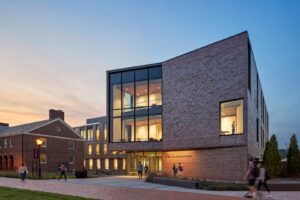
Lafayette is transforming its campus into a national model for sustainability by employing the tenants of green design and technologies into all aspects of its facilities, including new construction and renovation of existing structures.
The built environment impacts our emissions and strategies to reaching carbon neutrality.
Learn more about our new construction, and existing infrastructure here.
Connect with us
Office of Sustainability
746 High Street
Easton PA, 18042
sustainability@lafayette.edu

